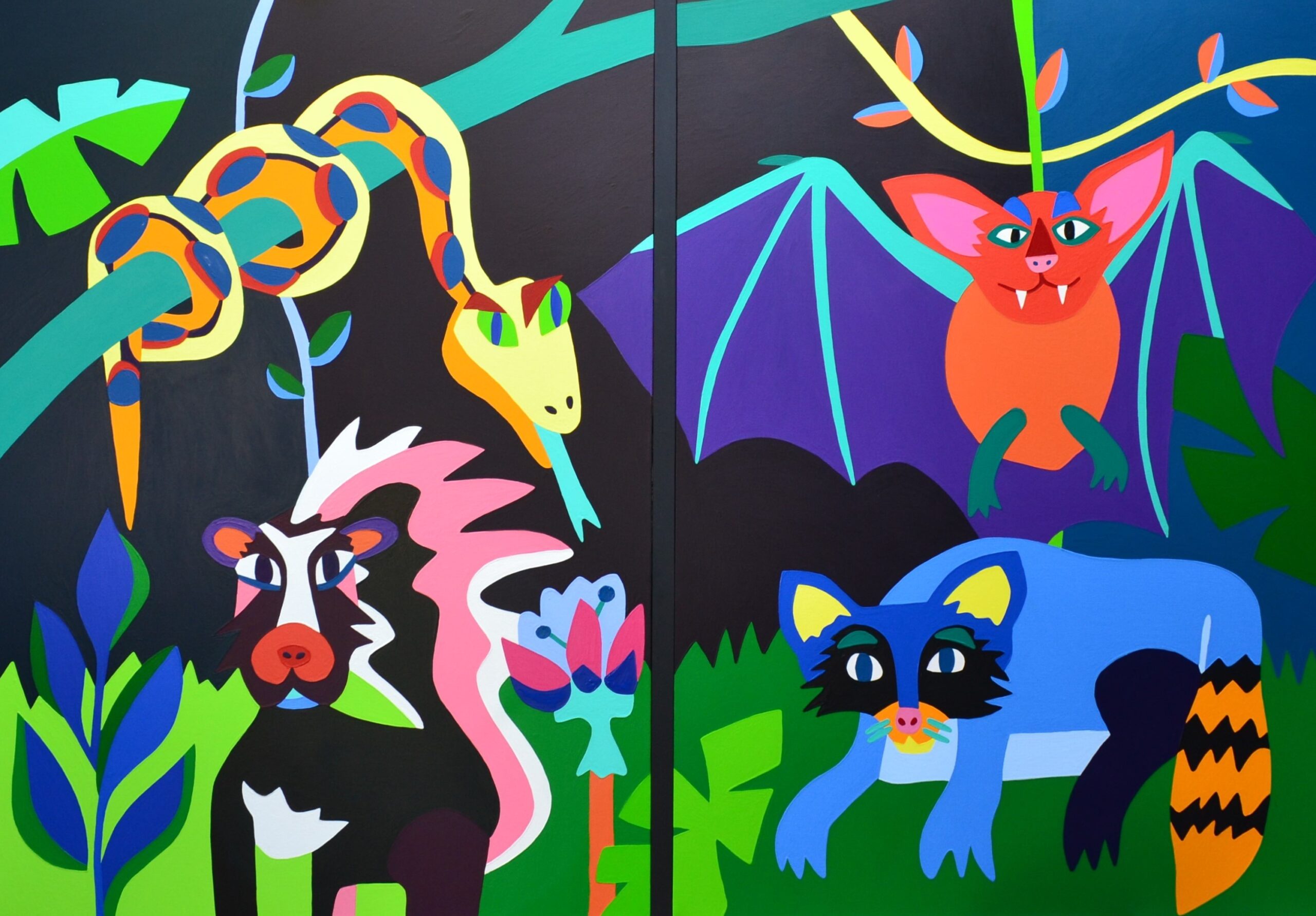With this work, the artist seeks to dispel myths of fear and suspense surrounding nocturnal species and highlight their importance in nature.
Often, adults pass on unfounded fears to children through stories and narratives lacking scientific basis, fostering phobias and prejudices that not only distort perceptions of these animals but can also lead to their persecution and harm.
The artist aims to bring the public closer to these animals and showcase how their adaptations allow them to play key roles in ecosystems. As Gonzalo states:
“These animals are often misunderstood, but they are indispensable. They control pests, disperse seeds, and act as nocturnal pollinators.”
Nocturnal animals have developed special traits that enable them to thrive in darkness. In his work, Gonzalo depicts a bat, a boa constrictor, a raccoon, and a striped skunk, each with unique sensory adaptations:
The bat uses echolocation, emitting ultrasound waves to navigate and hunt in complete darkness. Some species also pollinate and disperse seeds.
The boa constrictor, with limited vision, relies on heat-sensitive scales to detect prey and ambush it with precision.
The raccoon and the striped skunk have a highly developed sense of smell, allowing them to detect scents carried by the wind to locate food. Both are omnivores and seed dispersers, contributing to forest and ecosystem regeneration. They also help control insect, larva, and rodent populations.
Vision, for example, is a crucial sense for other nocturnal animals like the ocelot, jaguar, great horned owl, and barn owl, enabling them to move effortlessly in low light.
Touch plays a fundamental role in species that inhabit burrows, many of which have whiskers or sensory hairs that help them navigate and detect changes in their environment.
Finally, Gonzalo concludes:
“All nocturnal animals have evolved to play an essential role in nature. Without them, ecosystem balance would be disrupted.
That is why education is key to driving meaningful societal change and breaking myths about these species. Children should grow up without unfounded fears—this way, they will be more prepared for adventure and will truly appreciate the natural world.”

